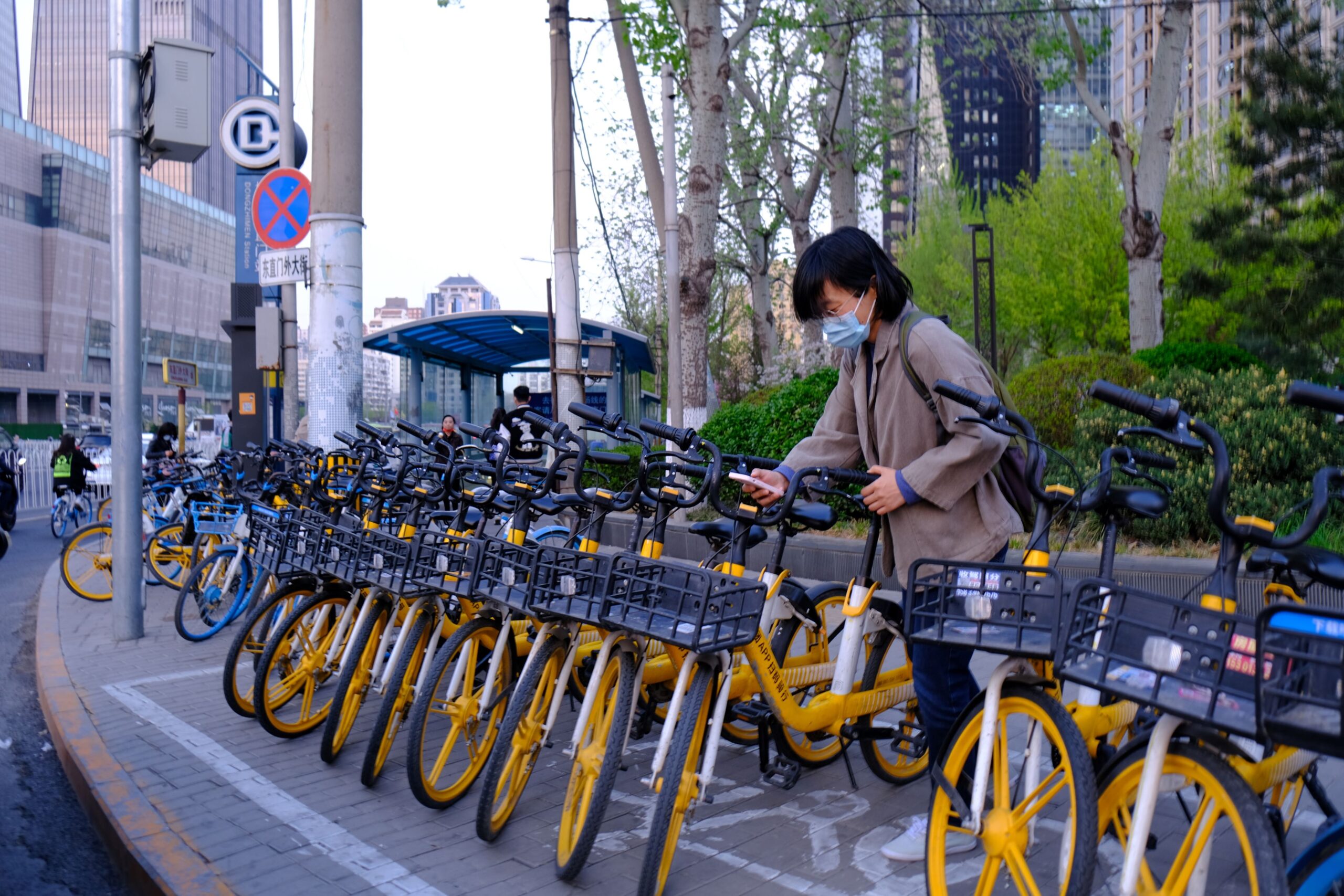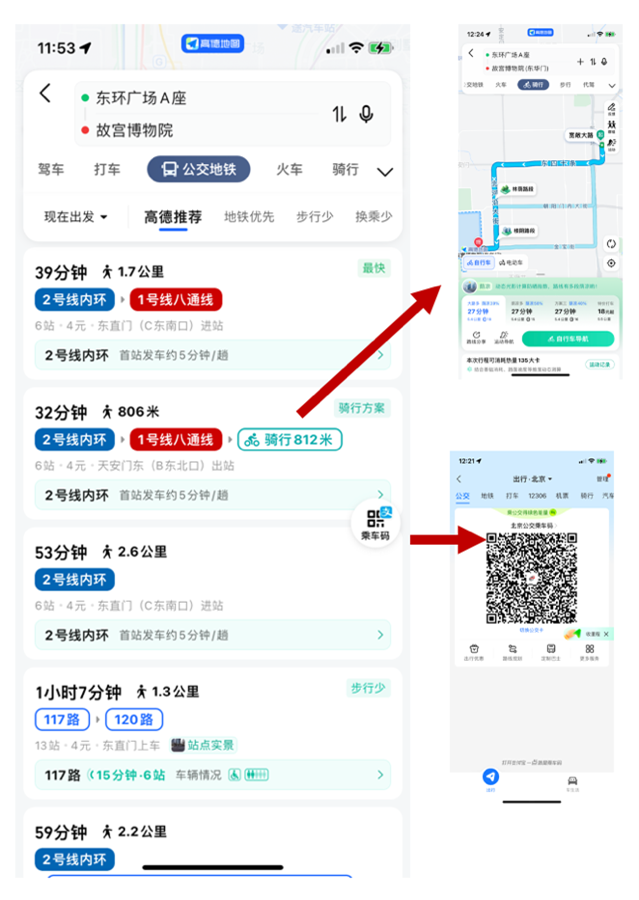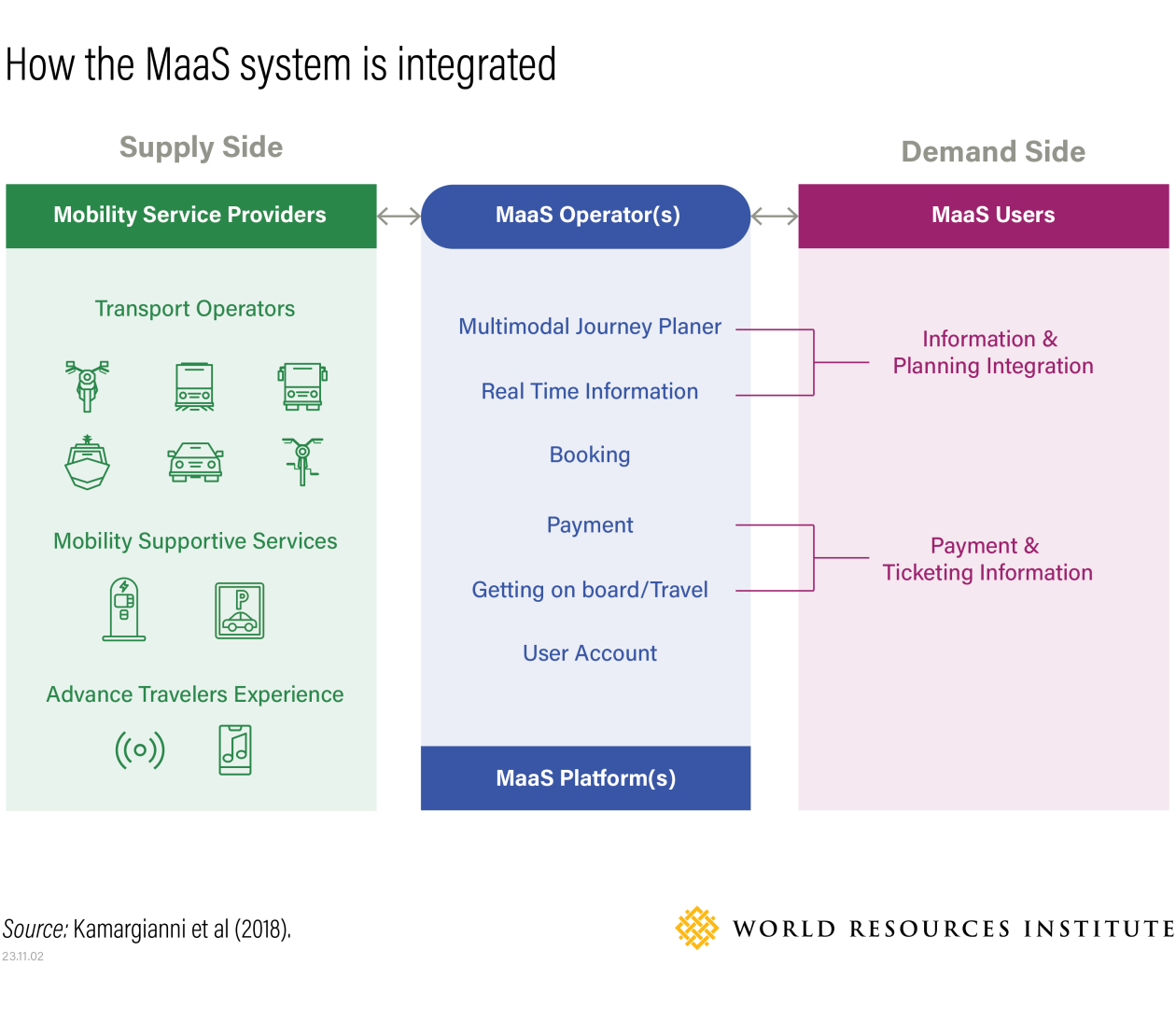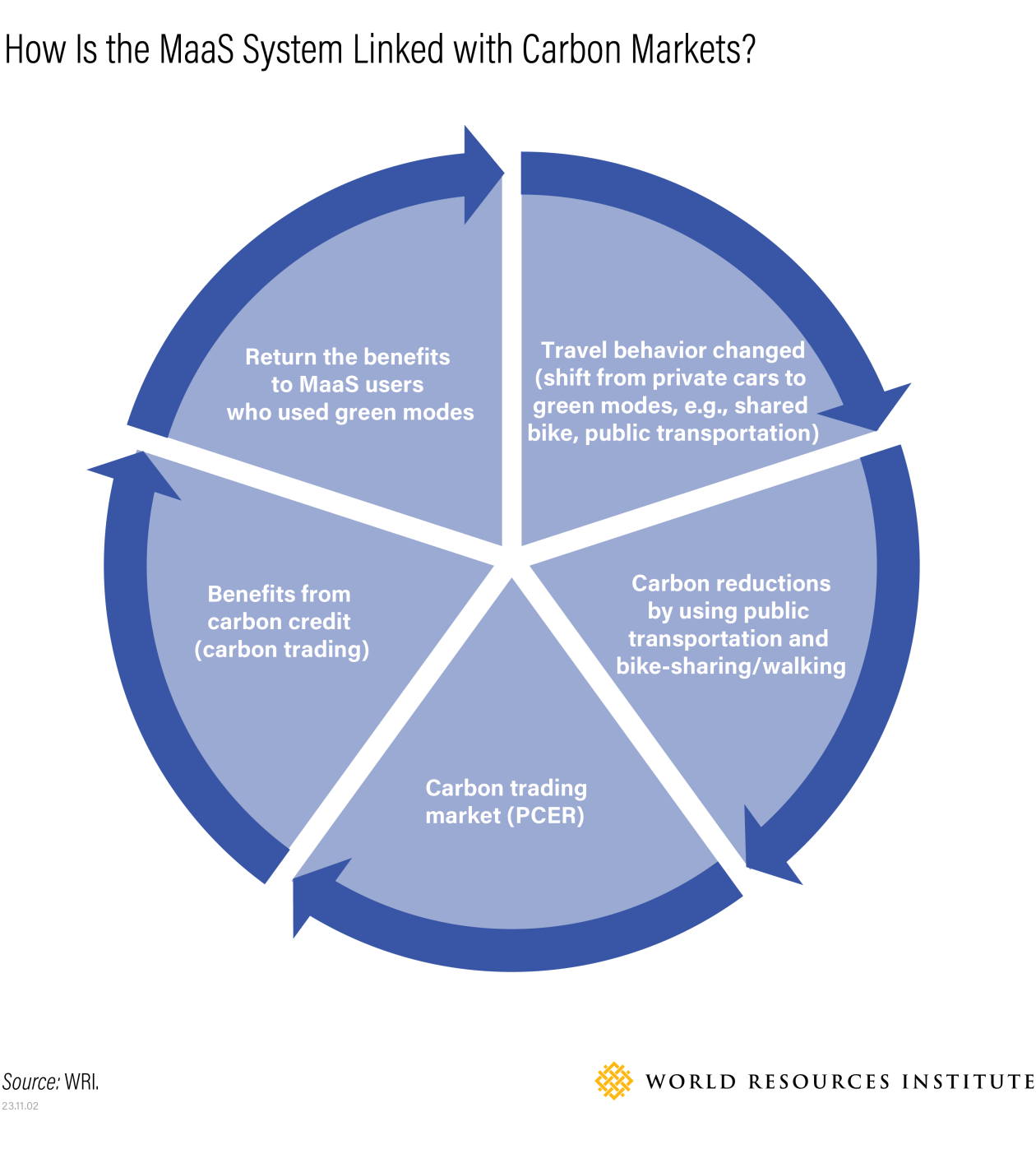
A new digital platform being piloted in cities around the world is making public transportation more efficient, economical and accessible, while encouraging low-carbon travel.
Mobility-as-a-Service is an on-demand service that integrates various forms of transportation services into a single platform accessible to travelers via a digital app. The platform acts as a one-stop travel planning and payment system, encouraging users to plan their trips via shared bikes, metros, buses and other green forms of transport with support from real-time travel information.
Many countries around the world are piloting Mobility-as-a-Service in their cities, including Finland, Japan, China, the United Kingdom, Singapore, the United States, Sweden, the Netherlands, Australia and Belgium. Learning from these early programs can help design a more successful platform.
Beijing’s pilot, for example, is a unique case that nudges travelers away from private cars toward greener travel modes (like public transport or bike sharing) by linking the Mobility-as-a-System platform with local carbon markets, which rewards travelers for choosing greener travel methods.

Beijing’s Green Mobility-as-a-Service Journey
Beijing has been piloting a Mobility-as-a-Service platform since 2019. By opening the app on a mobile device and typing in the destination, the platform provides many different travel planning options with different durations, modes, prices and other information. The current platform integrates most transport services, such as bus, metro, shared bike, ridesharing, and taxis.
Since its launch, the platform has consistently adhered to the city’s “green and integrated” transport development strategy, receiving positive public responses. As of today, more than 30 million users have used the app, providing 4.5 million daily trips that include green transport services.
While this data is a very positive start to the program, more progress is needed to shift behavior from private car trips. As of 2022, the motor vehicle fleet in Beijing reached 7.1 million, including 4.9 million private cars. Total daily trips in central city totaled 33.9 million, with green transport, including walking, biking, and public transit, accounting for 73.4%.

The platform’s initial success is being supported in three ways:
1) Strong Government Policies
Strong policies, such as the “14th Five-Year Plan” and various digital transport development plans, have placed Beijing’s Mobility-as-a-Service on a green and inclusive track. These policies aim to promote smart mobility services, encourage green transport, increase the share of green travel and improve the Mobility-as-a-Service platform.
Beijing’s Mobility-as-a-Service strategy is also in line with the city’s and county’s low-carbon transport strategy. In June 2023, the Beijing government unveiled the “MaaS 2.0 Work Plan,” emphasizing green and inclusive mobility. It aims to continue expanding intelligent mobility services that seamlessly integrates bus, metro, bike sharing, ride-hailing, ridesharing, long-distance coach and more. The goal is to provide green and inclusive service to over 6 million people daily by 2025. This will realize a large share of behavior shift from private cars to green modes, as well as over 1 million metric tons of carbon dioxide reduction during the next three years.
2) An Ecosystem Where Companies Work Together
Mobility-as-a-Service operates as a public-private partnership that includes governments, transport operators, financial institutions, Mobility-as-a-Service operators, technology and data providers, platform users and research institutions. The roles of each organization and company may vary depending on how the platform is set up and WRI research of the existing platforms shows there’s no defined business model.

For example, the Beijing initiative is led by the Beijing Municipal Commission of Transport and functions through a collaborative public-private approach. Operators like Gaode Maps and Baidu, which offer digital mapping services, act as platform facilitators. The city’s bus and metro operators and shared mobility providers are also well integrated. Other companies provide payment access, while additional businesses might be incorporated to provide discounts to online shops as incentives for using the platform. The primary users are individual travelers within Beijing.
3) A Reward System that Encourages Green Behavior
The Beijing Mobility-as-a-Service platform has been adopting a carbon market approach to encourage users to choose green transport options. Since September 2020, Beijing has introduced the “MaaS Travel, Green Life” Carbon-Inclusive Campaign, which is built into the app. Users who participate in the campaign automatically receive carbon reduction credits for their green travel behavior (for example, shifting from private car to shared bike, bus or metro). Users can then exchange the credits for things like discounted public transport cards or shopping vouchers. By now, the campaign has attracted over 3.5 million registered users, contributing to a cumulative carbon reduction of nearly 400,000 metric tons.

Among campaign participants, 21% of the users that primarily traveled by car each day have now engaged in green travel, which shows a significant increase in citizens’ willingness to adopt green options. Carbon credits are calculated based on the “Beijing Low-carbon Travel Carbon Emission Reduction Methodology” developed by Beijing’s transportation authority and its affiliated think tank. The approved local certified emission reductions credits (PCERs) credits will then be traded at Beijing’s local emissions trading system.
In 2021, Gaode Map, one of the platform operators, alone achieved transactions of 24,500 metric tons of PCERs, with 15,000 tons traded with local companies. The second phase of PCER transaction reached 97,600 metric tons. The benefits from the carbon trading returns to the app users in the form of public transport discounts, shopping coupons or users can donate their credits to charity organizations that promote green transport and other behavior changes for sustainability.
Creating a Successful Mobility-as-a-Service Platform
The value of developing Mobility-as-a-Service platforms is that it can improve efficiency and quality for travelers, encourage more people to choose green and low-carbon mobility modes, shape the public-transportation-centered mobility system, promote the digital transformation and open data system and improve the stability and level-of service of the system.
However, Mobility-as-a-Service also faces some challenges not only in Chinese cities, but in cities around the world. First, there is no single successful business model for all cities, and the operation models vary greatly in different places. Finding a suitable business model based on the local policy and investment environment, and culture to ensure commercial sustainability, will be the key to developing a successful system.
Also, the coordination among different stakeholders in a Mobility-as-a-Service ecosystem needs further improvement, especially for data sharing mechanisms.
Finally, establishing a proper monitoring and governance system is also an important part of the implementation process.
Expanding the development of Mobility-as-a-Service is an important step in building more sustainable cities and urban mobility. However, as we’ve learned through the pilot programs, the platform should be built consistently with a city’s existing low-carbon and sustainable strategy. Instead of public transportation companies acting as competitors with each other, Mobility-as-a-Service offers the possibility of creating a single platform that redefines the integrated transport system encompassing multiple kinds of shared and private mobility services.
This article is an update from the report “Mobility-as-a-Service Guideline for Chinese Cities and Cases Studies” from WRI China’s Mobility-as-a-Service project, under the Mobility and Accessibility Program (MAP), a collaboration between WRI and FedEx. This article reflects the independent views of the authors. The latest annual MAP report is here.
This article originally appeared on WRI’s Insights.
Su Song is an Associate for WRI China Ross Center for Sustainable Cities.
Miaoqing Zhong is a Research Assistant for WRI China Ross Center for Sustainable Cities.
Ding Tan is a Research Assistant for WRI China Ross Center for Sustainable Cities.






